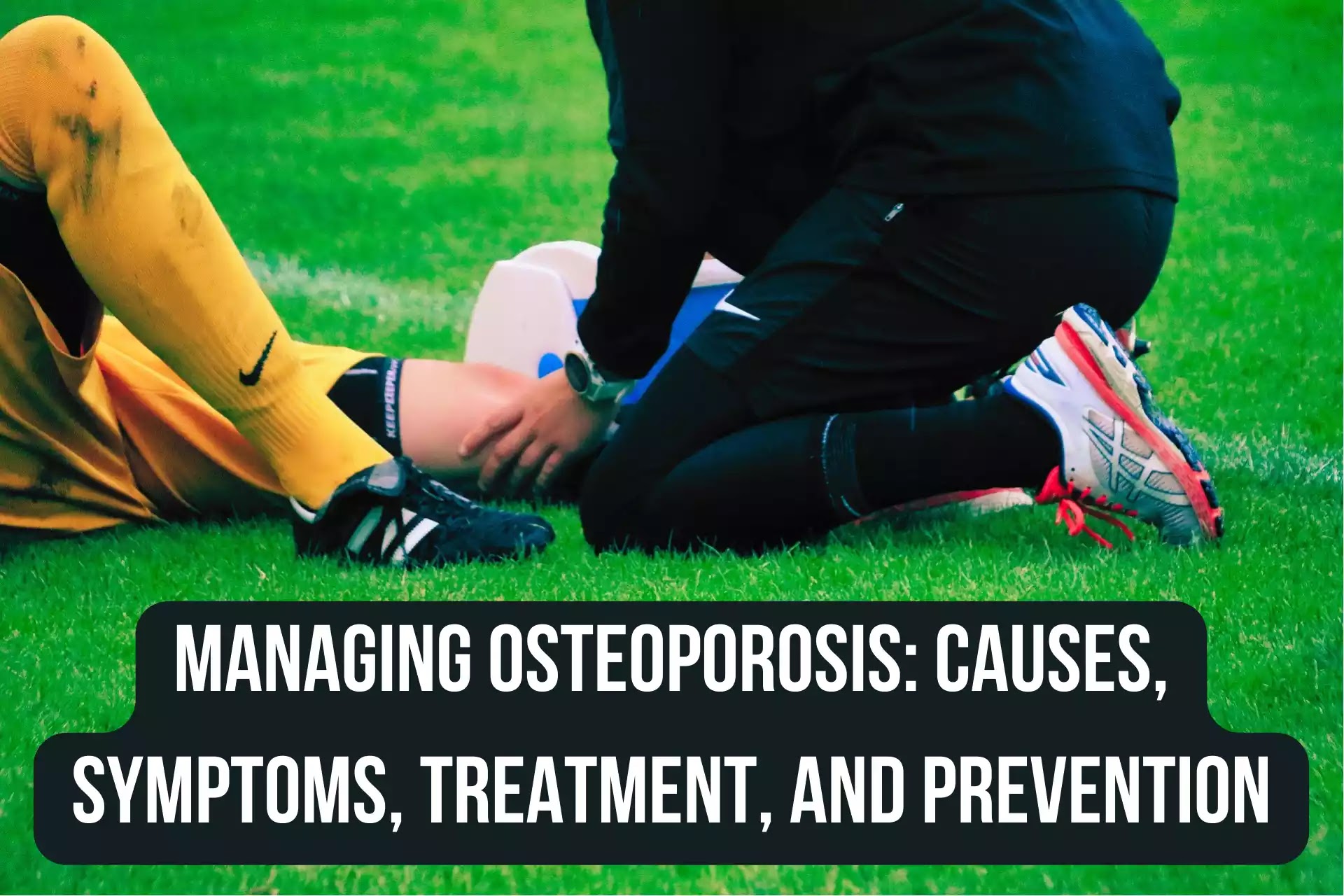Introduction
Osteoporosis is a medical condition characterized by the loss of bone density, resulting in brittle and weak bones that are more prone to fractures. It is a common condition, affecting millions of people worldwide, and is particularly prevalent among older adults, especially women. In this blog post, we will explore the causes, symptoms, diagnosis, and treatment of osteoporosis, as well as ways to prevent the condition from developing.
Causes of Osteoporosis:
The causes of osteoporosis are multifactorial and can vary from person to person. Some of the most common causes include:
- Age: As we age, our bones become less dense and weaker, making us more susceptible to osteoporosis.
- Gender: Women are more likely to develop osteoporosis than men, particularly after menopause when estrogen levels drop, leading to a loss of bone density.
- Genetics: Osteoporosis can be hereditary, and those with a family history of the condition are at a higher risk of developing it.
- Lifestyle factors: Poor nutrition, a lack of exercise, smoking, and excessive alcohol consumption can all contribute to the development of osteoporosis.
- Medical conditions: Certain medical conditions, such as hyperthyroidism, kidney disease, and rheumatoid arthritis, can increase the risk of osteoporosis.
Symptoms of Osteoporosis:
In the early stages, osteoporosis may not cause any symptoms, but as the condition progresses, the following symptoms may appear:
- Back pain caused by a fractured or collapsed vertebrae.
- Loss of height due to spinal compression fractures.
- Stooped posture or a hunched back.
- Fractures that occur more easily than expected, particularly in the wrist, hip, or spine.
Diagnosis of Osteoporosis:
A diagnosis of osteoporosis typically involves a combination of physical examinations, medical history, and bone density tests. A physical examination may include an assessment of your posture, height, and muscle strength, while a medical history will help to identify any risk factors you may have. Bone density tests, such as a DEXA (dual-energy X-ray absorptiometry) scan, are used to measure the density of your bones and determine your risk of fractures.
Treatment of Osteoporosis:
Treatment for osteoporosis typically involves a combination of medication, lifestyle changes, and in some cases, surgery. The aim of treatment is to prevent further bone loss, reduce the risk of fractures, and manage any pain associated with the condition.
- Medication: A range of medications are available to treat osteoporosis, including bisphosphonates, which help to slow down bone loss, and hormone therapy, which can help to increase bone density.
- Lifestyle changes: A healthy lifestyle can help to prevent the development of osteoporosis and manage the condition. This includes eating a balanced diet rich in calcium and vitamin D, engaging in regular weight-bearing exercise, quitting smoking, and limiting alcohol consumption.
- Surgery: In severe cases, surgery may be necessary to repair fractures or to stabilize the spine.
Prevention of Osteoporosis:
Prevention is key when it comes to osteoporosis. Some of the best ways to prevent the condition from developing include:
- Eating a healthy, balanced diet that is rich in calcium and vitamin D.
- Engaging in regular weight-bearing exercise, such as walking, jogging, or weightlifting.
- Quitting smoking and limiting alcohol consumption.
- Getting regular bone density tests to monitor your bone health.
- Taking calcium and vitamin D supplements if needed.
Conclusion:
Osteoporosis is a common medical condition that can cause significant pain, discomfort, and disability. However, with proper diagnosis and treatment, it is possible to manage the condition and reduce the risk of fractures. Additionally, by making lifestyle changes and taking steps to prevent the development of osteoporosis, you can protect your bone health and ensure a healthier, more active lifestyle as you age.
If you are concerned about your bone health or are experiencing symptoms of osteoporosis, it is important to speak with your healthcare provider. They can recommend appropriate testing, provide a diagnosis, and work with you to develop a personalized treatment plan to manage the condition.
Remember, prevention is key when it comes to osteoporosis. By making healthy lifestyle choices and taking steps to protect your bone health, you can reduce your risk of developing this condition and enjoy a healthier, more active life as you age.





~1.webp)

